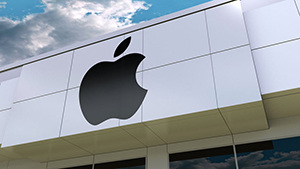Apple, Inc. presents a host of interesting case studies for anyone involved in international business, particularly in the area of international intellectual property law. Anyone that’s read Walter Isaacson’s book on Steve Jobs or otherwise followed the company knows that Steve Jobs was passionate, if not fanatical, about the quality and presentation of Apple products.
The look and feel of the products themselves, the packing, and eventually the Apple stores, were all designed with a level of detail arguably matched by no other company.
Apple Stores
Today, we’re going to focus on the stores. Anyone that has been in an Apple store would likely be able to recognize another Apple store, even if they all of the Apple logos were removed. The all-glass storefronts and minimalist interiors are the hallmarks of an Apple store. Countless hours of brainstorming and design work went into the development of the Apple store “look.” Apple has found a unique way to protect its work in designing its stores from potential copy-cats: trademark law.
As noted in a previous post, the purpose of trademark law is to protect a business’s investment in developing a reputation in the eyes of the public and to prevent consumer confusion as to the source of products or services. For example, if someone buys a computer with the trademarked Apple on it, they will rightly believe that they are purchasing a computer produced by Apple, Inc. To allow other companies to use the logo on their products would confuse consumers and undermine all the work Apple has done to develop a reputation as a reliable computer producer.
In 2010, Apple applied with the United States Patent and Trademark Office (USPTO) for a registered trademark for the design of its stores. The USPTO said no, reasoning that the trademark was not “inherently distinctive.” Apple, never one to give up a fight, tried again, submitting 122 additional pages to support its application. Again, the USPTO said no. Again, Apple refused to give up submitting an additional 681 pages. Finally, years after its initial application was filed, the USPTO office approved the trademark application.
After successfully gaining US trademark protection, Apple sought to expand that protection internationally. It applied for protection in the EU but again was forced to fight the issue when, as the Wall Street Journal reported, German authorities “claimed the layout of a shop can’t in and of itself be a trademark.” Eventually the case made it to the EU’s final decision making body, the European Court of Justice, and this month, the court found in favor of Apple, holding that unique store layouts can be trademarked in the EU.
While different from the traditional usage of trademark law, the grant of trademark protections to Apple’s stores makes sense. A consumer entering a store that includes all of the Apple design elements would probably think they were in an Apple store. In fact, consumers were confused when fake Apple stores were created in China in 2011.
Learn More from Our Attorneys
Want to learn more about using intellectual property law to protect the work you’ve put into your business domestically and internationally? Contact the attorneys at Whitcomb Law, P.C. today.



